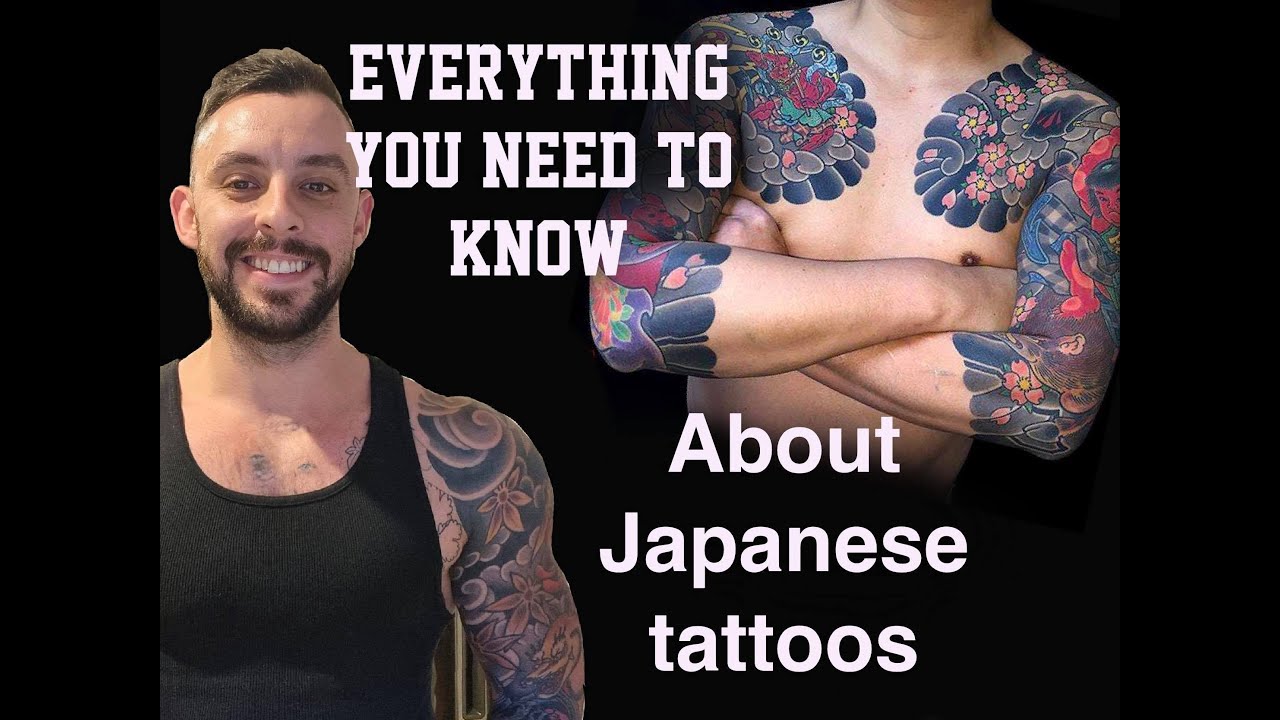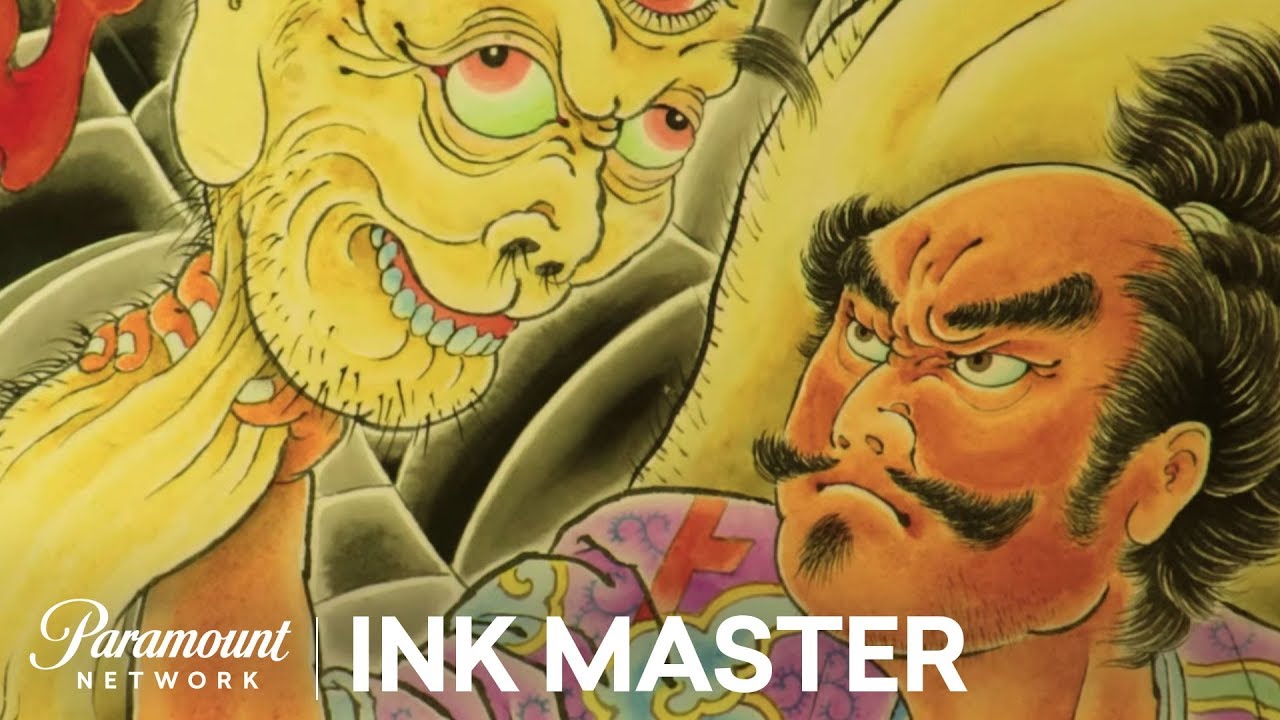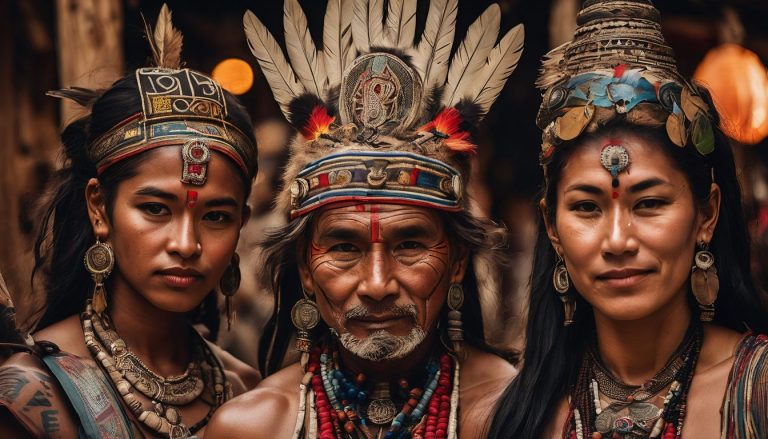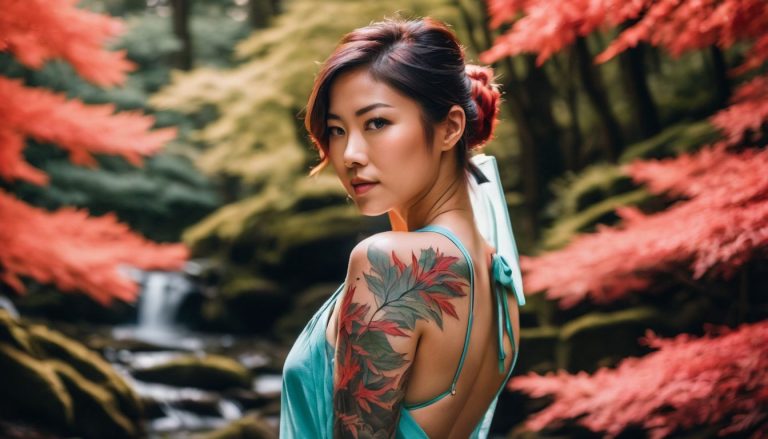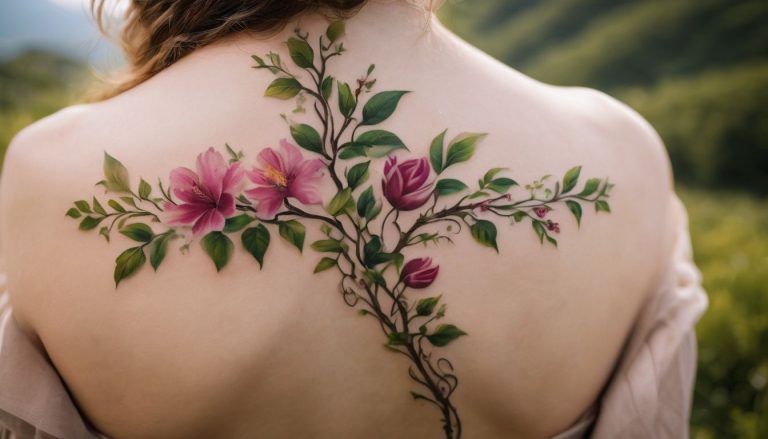Exploring the Symbolism of Japanese Tattoos
Create your own unique tattoos and art for your home
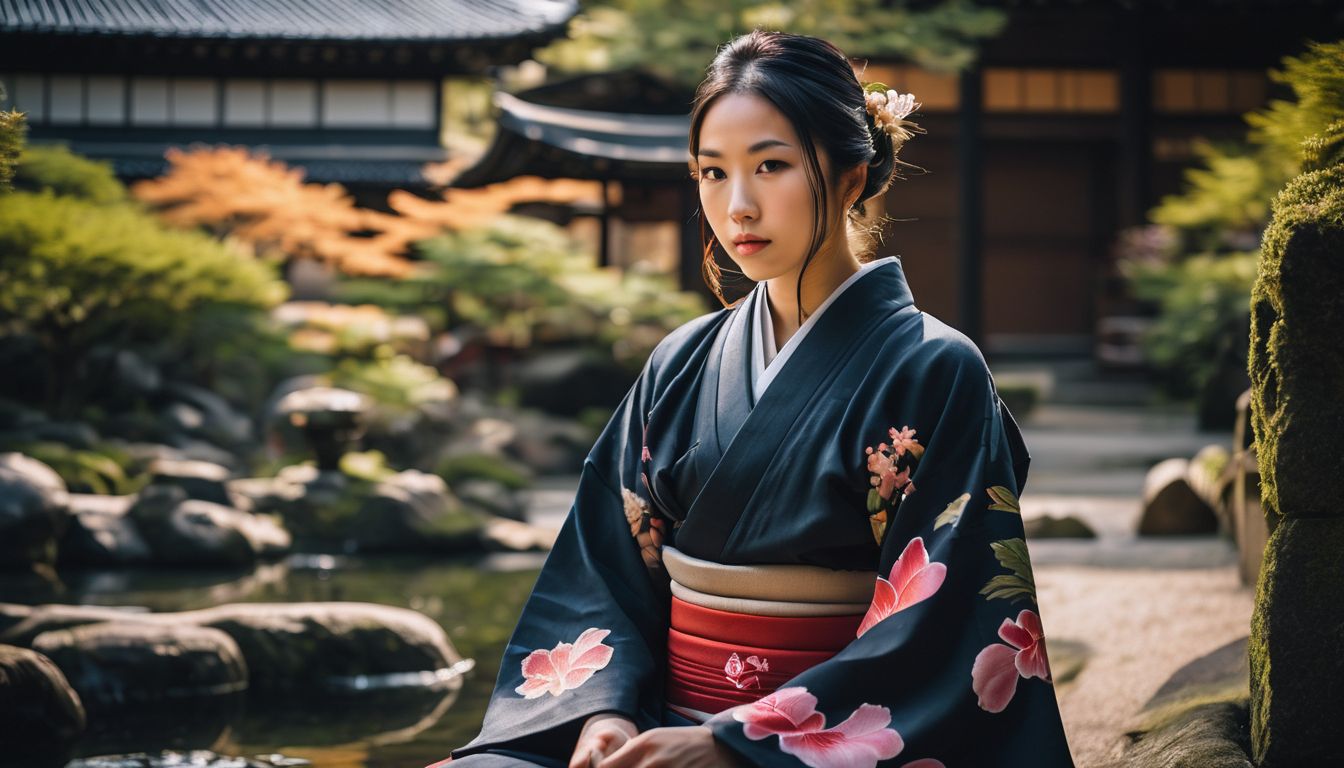 traditional Japanese tattoos sitting in a serene garden.” title=”A person with traditional Japanese tattoos sitting in a serene garden.” class=”awimage” />
traditional Japanese tattoos sitting in a serene garden.” title=”A person with traditional Japanese tattoos sitting in a serene garden.” class=”awimage” />
Are you drawn to the captivating world of Japanese tattoos but unsure what they signify? These elaborate designs are more than just art; they carry deep meanings rooted in centuries-old traditions.
Our blog will unveil the rich symbolism behind traditional Japanese tattoo motifs, guiding you through understanding their cultural significance and how they might resonate with your personal story.
Dive in and uncover the mystique inked into every line!
Key Takeaways
- Japanese tattoos, known as Irezumi, are rich in symbolism and date back to 10,000 BCE. They often feature traditional motifs like dragons for wisdom and strength, phoenixes for rebirth, koi fish for perseverance, samurai for honor, and cherry blossoms for life’s fleeting beauty.
- Techniques such as hand-poked Irezumi or machine-assisted Tabori require skill and precision. These methods bring cultural tales to life through art on the skin with designs depicting Japanese mythology, characters like warriors or goddesses, and natural elements signifying forces of life.
- Tattoo placement is intentional in Japanese culture; the back represents strength while arms show power. Common subjects include not only mythical creatures but also nature-inspired designs such as waves and animals that embody different virtues.
- Contemporary trends see a blend of traditional symbols with modern artistic expression. Minimalist tattoos have gained popularity alongside reinterpretations of classic motifs by renowned artists such as Horikazu, Horiyoshi III, and Shige.
- Proper aftercare is vital for tattoo longevity involving cleanliness, moisturizing without fragrances or alcohol content, minimizing sun exposure during healing periods to maintain vibrancy over time.
Understanding the Symbolism of Japanese Tattoos
Explore the depth of traditional Japanese tattoo meanings and the techniques used in Irezumi and Tabori, as well as the significance of Japanese characters, mythology, and natural elements in these tattoos.
Traditional Japanese tattoo meanings
Traditional Japanese tattoos, known as Irezumi, are more than just body art – they’re a language of symbols steeped in culture and history. Each design holds a special meaning and serves as a visual expression of cultural beliefs.
Dragons symbolize wisdom and strength to ward off evil spirits, while the majestic phoenix stands for rebirth and immortality. Koi fish are particularly revered; their grace in swimming upstream represents perseverance and overcoming adversity.
Samurai motifs convey honor and discipline, reflecting Japan’s warrior ethos. Cherry blossoms remind wearers of life’s ephemeral beauty, encouraging them to live fully in the moment before it fades away.
Even mythical creatures like tengu or yokai carry complex tales from folklore that inspire tattoo designs with deeper messages about human nature and morality. These traditional motifs combine artistic skill with symbolic significance, making each tattoo unique to its bearer’s journey through life.
Irezumi and Tabori tattoo techniques
Exploring the transition from traditional Japanese tattoo meanings to Irezumi and Tabori tattoo techniques reveals the intricate methods used in creating these culturally rich body art forms.
Irezumi, also known as Horimono, involves hand-poking or using a wooden handle with metal needles attached. This technique requires meticulous precision and is often associated with traditional Japanese motifs such as dragons, koi fish, and cherry blossoms.
On the other hand, Tabori tattoos utilize electric machines for shading and outlining. These techniques result in bold lines and vibrant colors, frequently depicting mythological creatures like samurai warriors and Buddhist deities.
Both Irezumi and Tabori methods have their distinct characteristics but share an emphasis on storytelling through symbolic imagery.
The process of applying Irezumi or Tabori tattoos demands expertise due to the incorporation of intricate patterns representing various aspects of Japanese culture such as strength, protection, resilience, harmony with nature, bravery, and good luck.
Traditional Japanese characters and mythology
Japanese tattoos often feature traditional characters and mythological figures deeply rooted in Japanese culture. These symbols are inspired by folklore, mythology, and art, each carrying its own rich history and significance.
For example, samurai motifs emphasize honor and loyalty, while Buddhist deities symbolize spirituality and protection. Ukiyo-e motifs such as cherry blossoms represent fleeting moments of beauty.
Additionally, the dragon is a popular figure representing power and strength in Japanese mythology.
The use of natural elements like water, fire, wind, and earth further adds meaning to Japanese tattoos. Each element carries symbolic significance; for instance, water represents purity and life force; fire signifies transformation or purification; wind embodies freedom or change; earth symbolizes stability or grounding presence in one’s life reflecting the interconnectedness with nature in traditional Japanese beliefs.
Use of natural elements
Japanese tattoos often incorporate natural elements such as cherry blossoms, waves, and animals like koi fish and tigers. These elements hold deep symbolic meanings in Japanese culture.
Cherry blossoms are a symbol of fleeting beauty and the transient nature of life, while waves represent strength, resilience, and the ebb and flow of life’s challenges. Animals like koi fish symbolize perseverance through adversity, while tigers embody courage and power.
Incorporating these natural elements into Japanese tattoos adds layers of meaning that resonate with both traditional and contemporary tattoo enthusiasts.
The use of natural elements in Japanese tattoos reflects the interconnectedness between humans and the environment, drawing inspiration from the beauty and symbolism found in nature.
Exploring Traditional Japanese Tattoo Culture
Delve into the history and association of Japanese tattoos with the Yakuza, as well as the contemporary trends shaping this traditional art form. Read on to discover more about the evolving culture of Japanese tattooing.
History of Japanese tattoos
Japanese tattoos have a long and storied history deeply rooted in Japanese culture. Dating back to the Jomon period, around 10,000 BCE, tattooing was initially used for spiritual and decorative purposes.
As time progressed, during the Edo period (1603-1868), criminals were branded with tattoos as a form of punishment. However, this era also saw the rise of irezumi (traditional Japanese tattooing) becoming an art form adorned by firemen and laborers.
Irezumi evolved into yakuza body suits containing intricate designs that held significant symbolism.
Association with Yakuza and crime
Japanese tattoos have long been associated with the Yakuza, a well-known Japanese organized crime syndicate. Historically, members of the Yakuza adorned themselves with elaborate tattoos as a symbol of belonging and allegiance to their criminal organization.
The intricate designs were also used to intimidate rivals and assert dominance within the underworld. While today the association between Japanese tattoos and organized crime has diminished, there is still some stigma attached to these traditional body art forms.
In addition, mainstream society may still hold misconceptions about individuals bearing visible traditional Japanese tattoos due to their historic connection with criminal enterprises.
Contemporary trends
Contemporary trends in Japanese tattooing reflect a fusion of traditional symbolism and modern artistic expression. As more people embrace the cultural significance of Japanese tattoos, there is a growing demand for innovative designs that incorporate elements from mythology, folklore, and nature while incorporating personal meanings.
Additionally, minimalist Japanese tattoos have gained popularity for their subtle yet profound symbolism, appealing to those seeking smaller-scale ink art with deep meaning.
Tattoo artists are also reinterpreting classic Japanese motifs with contemporary styles and techniques, offering clients a blend of tradition and innovation. Furthermore, there is an increasing acceptance of Japanese tattoo culture in mainstream society as perceptions shift towards recognizing the artistry and storytelling behind each design rather than associating it solely with criminal activities or organized crime.
Prominent Japanese Tattoo Artists
Some of the most renowned Japanese tattoo artists include Horikazu, Horiyoshi III, and Shige. Each artist has their own distinct style and has contributed to the evolution of Japanese tattoo artistry.
Names and styles
Japanese tattoo artistry has been influenced by a wide range of skilled artists, each with their unique style. Horiyoshi III is renowned for his traditional full-body irezumi tattoos, often featuring Japanese mythological motifs and Buddhist deities.
Meanwhile, Shige’s modern approach to Japanese tattooing incorporates ukiyo-e elements and bold colors. On the other hand, Horitomo blends traditional tebori techniques with contemporary designs inspired by Japanese cultural symbols and folklore.
Each artist brings their own interpretation of traditional symbols and themes into their work, contributing to the rich diversity within Japanese tattoo styles.
Exploring these prominent artists allows us to appreciate the evolution of Japanese tattoo artistry and the intricate fusion of old traditions with new interpretations. Understanding the different styles provides insight into how these influential names have shaped the world of Japanese tattoos, inspiring both tattoo enthusiasts and aspiring artists alike.
Evolution of Japanese tattoo artistry
Japanese tattoo artistry has evolved significantly over the years, blending traditional techniques with modern styles. Tattoo artists have adapted to new tools and technologies while still maintaining the rich symbolism and cultural significance of Japanese tattoos.
Today, contemporary Japanese tattoo artists continue to push boundaries by incorporating innovative designs and color palettes, attracting a global audience seeking authentic yet progressive interpretations of this ancient art form.
The fusion of traditional motifs with contemporary flair has led to a resurgence in interest for Japanese tattoos worldwide. This evolution not only reflects changing artistic preferences but also highlights how the timeless allure of Japanese tattoo artistry continues to captivate individuals beyond its cultural origins.
As more people embrace these transformative works of body art, there is an increasing celebration of the intricate details and deep-rooted meanings that make Japanese tattoos truly exceptional.
Design and Placement of Japanese Tattoos
Japanese tattoos can be found on various parts of the body, with popular placements including the back, arms, and legs. Traditional motifs such as koi fish, dragons, and cherry blossoms are commonly used in Japanese tattoo designs.
Common body placements
Japanese tattoos are often placed strategically to convey specific meanings and to enhance the overall impact of the design. Various body placements hold symbolic significance in traditional Japanese tattoo culture, with each area chosen thoughtfully to align with the wearer’s individual beliefs and values. Here are some common body placements for Japanese tattoos:
- Back: Symbolizes strength and resilience, commonly featuring large-scale designs such as dragons, koi fish, and samurai warriors.
- Arms: Reflects power, protection, and honor, often adorned with motifs like cherry blossoms, tigers, or traditional Japanese characters.
- Chest: Conveys courage and fortitude, typically showcasing iconic symbols such as peonies, dragons, or Buddhist deities.
- Legs: Signifies perseverance and determination, frequently embellished with intricate patterns like waves, lotus flowers, or mythical creatures.
- Torso: Represents inner strength and spiritual connection, featuring elaborate compositions such as phoenixes, snakes, or celestial beings.
Traditional motifs and subject matter
Japanese traditional tattoo motifs encompass a wide range of subjects, including mythological creatures like dragons and phoenixes. Nature-inspired designs such as cherry blossoms, waves, and tigers also hold deep symbolism in Japanese tattoos.
Other popular subjects include samurai warriors and geishas, each carrying their own unique meanings within the traditional art form.
These motifs play an integral role in conveying powerful messages of strength, resilience, and protection. The incorporation of these timeless symbols creates visually striking tattoos that are rich with cultural significance and historical context.
Delving into the depth of Japanese folklore and artistry provides inspiration for meaningful tattoo designs that continue to captivate audiences worldwide.
Choosing a custom design
When selecting a custom design for a Japanese tattoo, it is crucial to consider symbols that hold personal significance. Whether inspired by mythology, nature, or traditional characters, each element should convey meaning to the individual.
A skilled tattoo artist can help incorporate desired motifs such as samurai, koi fish, or cherry blossoms into a unique and personalized design. Researching different styles and consulting with experienced artists will ensure the chosen design embodies the intended symbolism and aesthetic appeal.
Crafting a custom Japanese tattoo involves collaborating closely with an artist to create a meaningful composition that reflects individual beliefs and values. Exploring traditional themes and symbols like Buddhist deities or Ukiyoe motifs offers inspiration for crafting a one-of-a-kind design that resonates on a personal level.
Caring for Your Japanese Tattoo
Proper aftercare is essential for the longevity of your Japanese tattoo. It includes keeping it clean, moisturized, and protected from sun exposure during the healing process. Understanding how to care for your tattoo will ensure that it heals properly and looks vibrant for years to come.
Aftercare tips
To ensure the best healing for your Japanese tattoo, follow these aftercare tips:
- Keep your tattoo clean by gently washing it with a mild, fragrance-free soap.
- Apply a thin layer of fragrance-free, alcohol-free moisturizer to keep the skin hydrated and prevent scabbing.
- Avoid exposing your fresh tattoo to direct sunlight, as it can cause fading and damage the healing skin.
- Wear loose clothing to prevent friction and irritation on the tattooed area.
- Refrain from scratching or picking at any scabs that form as this can affect the final outcome of the tattoo.
- Be mindful when engaging in activities that may expose your new tattoo to dirt, chemicals, or excessive moisture.
Healing process
Aftercare tips are crucial for ensuring the proper healing process of your Japanese tattoo. Once your tattoo has been completed, it’s important to follow these steps to help facilitate the healing process:
- Keep the tattooed area clean and dry to prevent infection.
- Apply a thin layer of fragrance – free moisturizer to keep the skin hydrated and promote healing.
- Avoid exposing your tattoo to direct sunlight or soaking it in water, as this can hinder the healing process.
- Refrain from picking or scratching at scabs that may form during the healing period.
- Wear loose clothing to prevent friction on the tattooed area, allowing it to breathe and heal properly.
Conclusion
In conclusion, Japanese tattoos are steeped in mythology and artistry. They symbolize protection, bravery, and good luck, reflecting the rich cultural heritage of Japan. The vivid colors and intricate designs speak to the deep-rooted significance of these tattoos.
From traditional motifs to minimalist styles, Japanese tattoos continue to captivate with their timeless symbolism and bold features.
FAQs
1. What does symbolism mean in Japanese tattoos?
In Japanese tattoos, symbolism means including traditional art and folklore to represent certain qualities or stories, like Koi fish for perseverance or samurai motifs for bravery.
2. Can you find Buddhist deities in Japanese tattoo designs?
Yes, many people get tattoos of Buddhist deities as part of their design to show spiritual beliefs or seek protection.
3. Are there meanings behind animal-themed Japanese tattoos?
Definitely! For instance, a Japanese tiger tattoo often symbolizes strength and courage, while a snake can represent wisdom and good luck.
4. What’s so special about Ukiyoe motifs and other traditional themes in these tattoos?
Ukiyoe motifs from historical Japanese art add beauty and cultural depth to the tattoo; they connect the wearer with Japan’s rich artistic heritage through stunning visual storytelling.

